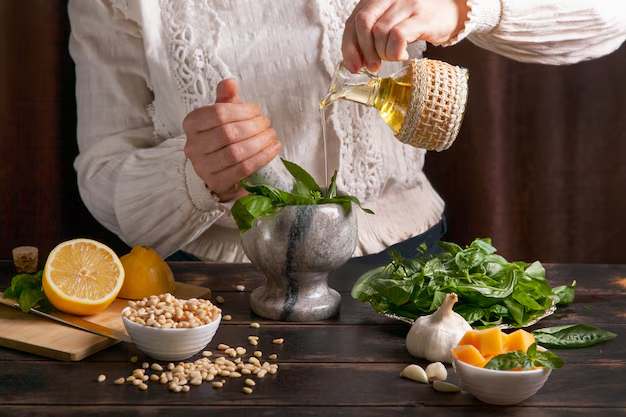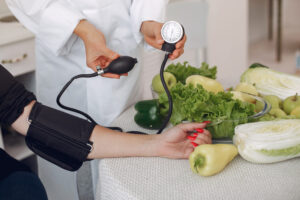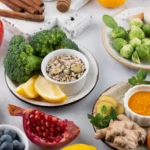
Natural Approaches to Lowering Blood Pressure: Herbs, Diet, and Lifestyle Changes
Herbal Interventions
Hibiscus sabdariffa (Hibiscus Tea)
- Efficacy: Comprehensive review of 26 randomized controlled trials involving 1,797 participants found dose-dependent reductions in both systolic and diastolic blood pressure, with reductions exceeding 10 mmHg in populations over 50 years old in studies lasting more than four weeks
- Mechanism: Rich polyphenol content enhances nitric oxide production, inhibits calcium channels, and opens ATP-sensitive potassium channels
- Additional benefits: Improves lipid profiles by reducing total cholesterol, LDL-C, and fasting blood glucose while increasing HDL-C
- Safety concerns: Prolonged use at high doses may elevate liver enzymes; contributes to increased oxalate levels potentially elevating kidney stone risk; may cause dermatitis, headaches, nausea, and ear ringing
- Contraindications: Not recommended for pregnant or nursing individuals; risks for those with low blood pressure or taking antihypertensive medications

Garlic (Allium sativum)
- Efficacy: Meta-analysis of 12 trials involving 553 adults showed average reductions of 8.3 mmHg systolic and 5.5 mmHg diastolic blood pressure; aged garlic extract (AGE) at 480 mg daily reduced SBP by ~10 mmHg and DBP by 5 mmHg within 2-3 months
- Mechanism: Allicin promotes vasodilation by enhancing nitric oxide synthesis; exhibits ACE-inhibitory activity; generates hydrogen sulfide for smooth muscle relaxation; provides antioxidant protection
- Additional benefits: Improves arterial stiffness, reducing pulse wave velocity by 0.7 m/sec; positively modulates gut microbiota
- Safety concerns: Interactions with cytochrome P450 system, particularly CYP3A4; affects metabolism of drugs like hydrochlorothiazide, captopril, and nifedipine
- Dosage: Kyolic aged garlic extract at 960 mg daily containing 2.4 mg S-allylcysteine showed significant effects
Cinnamon (Cinnamomum verum)
- Efficacy: Review of 9 studies involving 641 participants showed reductions of 6.2 mmHg systolic and 3.9 mmHg diastolic over 12 weeks
- Mechanism: Promotes vasodilation through nitric oxide pathways and improved endothelial function
- Additional benefits: Regulates blood sugar levels, beneficial for metabolic syndrome and type 2 diabetes
Ginger and Ginseng
- Ginger: Contains (6)-gingerol, an Ang II type 1 receptor antagonist; reduces cholesterol and triglycerides while suppressing ACE-1 activity
- Ginseng: Shows dose-dependent hypotensive effects by enhancing nitric oxide and cyclic guanosine monophosphate levels
Herb-Drug Interactions
Critical Interactions
- Garlic: Modulates CYP3A4 enzymes affecting metabolism of hydrochlorothiazide, captopril, nifedipine
- Ginkgo biloba: Increases bleeding risk when combined with anticoagulants; 12.94% prevalence of interactions with clopidogrel and aspirin
- St. John’s Wort: High-hyperforin extracts (>1 mg/day) induce CYP3A4 and P-glycoprotein, reducing effectiveness of antihypertensive medications

Patient Communication Issues
- 70% of patients fail to disclose herbal medicine use to healthcare providers
- Only 1.7% of herbal remedy suggestions originate from healthcare workers
- Cultural beliefs often favor traditional knowledge over medical advice
Traditional Medicine Approaches
Traditional Chinese Medicine
- Gastrodia elata (Tianma): Contains gastrodin, interferes with RAAS, decreases serum angiotensin II
- Uncaria rhynchophylla (Gou-Teng): Contains hirsutine and rhynchophylline, promotes nitric oxide production
Ayurvedic Medicine
- Bacopa monnieri: Facilitates vasodilation and enhances nitric oxide release
- Andrographis paniculata: Lowers blood pressure by increasing nitric oxide release and inhibiting intracellular calcium elevation
Indigenous Remedies
- Buchu: South African herb with diuretic and anti-inflammatory properties, reduces blood volume and pressure
Dietary Strategies
Key Nutrients
- Potassium-rich foods: Bananas, spinach, avocados, sweet potatoes; average reduction of 4-5 mmHg systolic blood pressure
- Magnesium supplementation: Doses exceeding 300 mg/day result in 2-3 mmHg systolic and 1-2 mmHg diastolic reduction
- Omega-3 fatty acids: Reduce systolic blood pressure by 2-5 mmHg and diastolic by 1-3 mmHg
Dietary Patterns
- DASH diet: Average reduction of 5-6 mmHg systolic and 3-4 mmHg diastolic blood pressure
- Plant-based diets: Reduce systolic blood pressure by 6-7 mmHg and diastolic by 4-5 mmHg compared to omnivorous diets
Guidelines
- WHO recommendations: Reduce sodium to <2g/day, increase potassium to ≥3.5g/day
- American Heart Association: Minimum two servings of fatty fish per week
Safety Considerations
Monitoring Requirements
- Regular monitoring needed for herbal supplements, especially with concurrent medications
- Liver enzyme monitoring for prolonged hibiscus use
- Coagulation monitoring for ginkgo biloba users
Regulatory Issues
- FDA classifies dietary supplements under food regulations, not pharmaceutical standards
- No requirement to prove safety or efficacy prior to market release
- Product quality and consistency vary across brands



